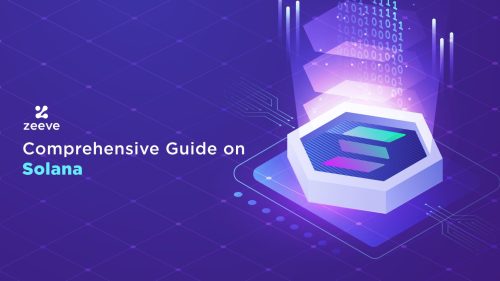
A Complete Guide on Solana Blockchain and its Use Cases
The rapid emergence of blockchain has favored many industries. The disrupting technology allows you to build in public and makes your work trustless and secure. It makes the connection between companies and their users better.
Among many of the influential blockchain networks, Solana stands ahead in the blockchain innovation curve. The open-source blockchain network is known for being fast and scalable. The blockchain network is considered a great place for blockchain infrastructure, dApps, and crypto.
Anatoly Yakovenko, an engineer from Qualcomm launched Solana Labs Inc. in 2018. Yakovenko worked with Raj Gokal to bring the platform to the public in the year 2020. Solana aims to bring blockchain to everyone, be it an enterprise or an individual creator. With more than 11.5 million active users the network’s goal is to make blockchain technology mainstream.
The vision of Solana is to provide every individual with opportunities, security and financial freedom. The concept of decentralization is perfectly embodied in Solana’s ecosystem. Let us know more about the Solana ecosystem, and what are use cases of it. We will understand why the blockchain is known to be an Ethereum killer. The powerful tool for developers has also its own set of advantages and disadvantages, we will know more about it as you read further.

The Underlying Technology of Solana
Solana is a Layer 1 blockchain that uses a hybrid between PoS and PoH consensus mechanism. One of the world’s best-performing blockchains works on the following technology:
Proof of History (PoH)
Remember Ethereum’s shift to the PoS mechanism. Solana’s founder Anatoly Yakovenko realized that even PoS comes with a set of problems. Thus, he chose to come up with a novel technique known as PoH. The problem with Proof of Work (PoW) and PoS is that miners and validators have advanced access to transaction information. Thus allowing them to control users’ information related to transactions.
The Proof of History which Solana employs timestamps the transactions, this takes away the role of bots and miners who verify the transactions. Solana operates on the merger of PoH and PoS. Proof of History as the name suggests there is a digital record of transactions.
The PoH has a cryptographic clock assigning a unique timestamp to each transaction. The validators own a cryptographic clock so as to keep track of transactions. Thus taking away the burden from the nodes for verifying and validating transactions. In 2023, Solana is one of the biggest PoS & PoH networks in the world by node count as per the Nakamoto coefficient.
Solana Cluster
The clusters maintain the network’s integrity by maintaining transactions on Solana. The clusters are a set of validators and it can be of two types:
- Independently owned clusters
- Clusters can co-exist as well when they share a common genesis block.
Clusters track the real-world assets on Solana and also know which validator is maintaining the cluster. It allows the verification of the result of user-submitted programs.
Tower Byzantine Fault Tolerance (BFT)
Tower consensus is an essential mechanism since and utilizes the PoH cryptographic clock. Tower BFT avoids time delays, allowing the network to reach an agreement quickly.
Turbine
The Turbine is a multi-layer block propagation protocol that broadcasts transaction shreds on the network. The Turbine uses User Datagram Protocol bringing low-tolerance connections and low latency between the apps. The mechanism makes node communication easy as each node communicates with a small group of nodes.
Pipelining
Pipelining is a rendering technique that is used for CPU design. Solana uses pipelining for DeFi projects. Pipelining keeps the process efficient by managing the transaction stages.
Gulf Stream
“Mempools” are crypto node mechanisms for saving data on unconfirmed transactions that are a contraction of memory and pool. A mempool-less forwarding protocol, Gulf Stream is a part of the network. Gulf is a protocol known for faster transactions.
Ledger Replicators
Replicators known as Archivers are used to store Solana’s petabytes of network data. To stop the centralization around the validators, replicators mine nodes to store data. Furthermore, leverages a public symmetric key to encrypt data. However, while encrypting data a dishonest storage node can affect encryption and delete information. Solana thus randomly encrypts data and records the hash. Thus the information stays in the exact sequence for every Proof of replication and verifies all proofs in one batch.
Solana Vs. Ethereum
Both blockchain networks are known for handling smart contracts efficiently. This makes them top contenders in the field of dApps. But many of you may have heard Solana to be known as the Ethereum Killer. Here are some of the reasons for which comparisons are drawn between Solana and Ethereum.
Consensus Mechanism
Ethereum is well known to use PoW and later shifted to the PoS mechanism. Using PoS and PoH together, Solana uses a hybrid approach to operate the consensus. It uses a timestamp to know the time between two transactions. The timestamp happens to be a standout feature of the network.
Transaction Speed
Solana uses TBFT to achieve speed, while Ethereum being one of the popular blockchain has slow transaction speed because of many participants.
Architecture
Solana has stateless architecture which means the state of the previous transaction is not stored. The programs on Solana can be upgraded by developers.
Smart Contract Languages and Tools
Solidity as per the developers’ experience is considered to have a steep learning curve and therefore is considered difficult. While Rust employed by Solana is fast, secure, and has a streamlined development environment.
Gas Fee
The gas fee on Ethereum is high, we all know that. To counter that there has been a rise in L2 solutions. Amid all of this, Solana being a Layer 1 blockchain solves the problem of transactions and has a lower gas fee.
Enterprise Use Cases of Solana & Brands Associated With it
As an enterprise owner or as an individual creator you must be curious to know more regarding the use cases of Solana. Although, the network is dynamic and has a wide array of applications, here are the 5 major use cases of Solana:
NFTs
Solana has minted 21.9 million NFTs. Currently, Solana is working on executable NFTs or the xNFTs which are available in the open beta of new source wallet. Solana NFTs are different from others as they are built using Rust language & aren’t EVM compatible.
Gaming
As per Solana, the future belongs to play-and-own games. Here the players will own the data. The company is providing Web3 games with a speed of Web2 speed. The network horizontally scales and maintains a shared state. Panzerdogs, Aurory, and Mini Royale are some of the games that use Solana’s blockchain protocol.
DeFi
After the FTX crash, Solana cut ties with it and empowered the DeFi space. After Serum, the Solana community brought OpenBook to help everyone with decentralized finance. Major DEX such as Raydium has shared liquidity with OpenBook.
Payments
If you are a merchant ready to accept transactions in stablecoin Solana Pay would be the perfect fit. One of the coolest sportswear brands, ASICS, is powered by Solana Pay and has an inspired UI collection. It has a frictionless, permissionless payment system. Each shoe unit is paired with an NFT loyalty badge which users can trade, sell or collect.
DAO
Solana provides high transaction throughput and the ultra-low fee which makes it perfect for DAOs. Till now 140 DAOs are part of the network. As a member of the Solana community, you can have an active role. All of it without spending much money on transaction fees. MonkeDAO is one of the DAOs that works with Solana Monkey Business. They aim to provide immense value to their members through community-led projects.
Energy-Efficiency of Solana
It is Solana’s energy efficiency that makes the network stand out. The transactions of the network use as much energy as it takes for a Google Search. Other than being fast and globally distributed, Solana is a composable and green blockchain.
The network is focused on building a better community by supporting carbon neutrality and being climate focussed. Solana is open-sourcing the data to bring the network’s footprint to zero. There is real-time energy emissions tracking. Thus, anyone can examine a network’s emissions down to the validator level.
Solana also has a WaterDAO water credit verification body which works to create a decentralized robust water infrastructure.
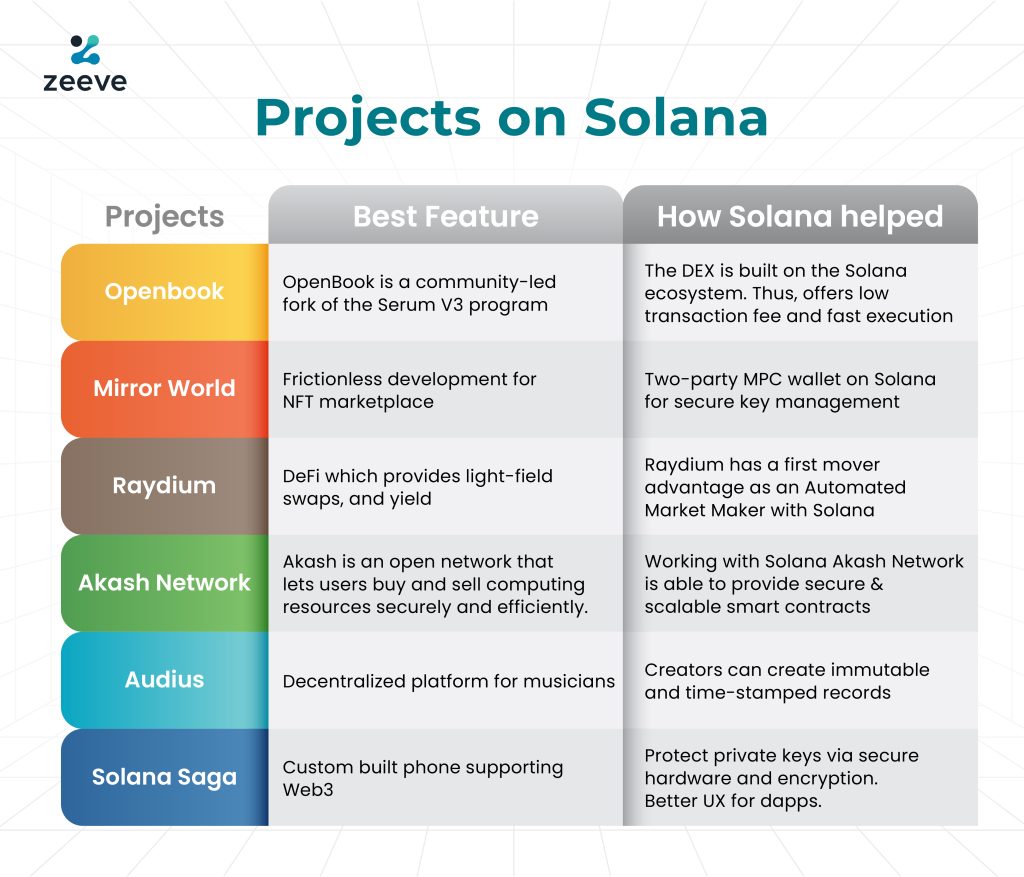
Advantages of Solana
Like every technology, Solana also has its merits and demerits. Here are some of the strengths and deficiencies of the Solana network:
Better Speed
Solana has a better speed and scalability thus the computations are done at a faster pace. It offers 50000 TPS. The network is more efficient because of its better block time of 400 milliseconds.
Less fee & Interoperability
The gas fee of the network is low as compared to other blockchains. Additionally, the interoperability is impressive. The network’s layered architecture makes integration with other applications easy.
Secure
The presence of transaction history makes the network more secure. The data on the network is censorship-resistant. The usage of PoH unlocks sub-second finality across the globe.
Easy for Developers
Anyone who understands Rust C and C++ will be able to build on Solana. There are already a bunch of programs present on the Solana ecosystem to help the developers.
Disadvantages of Solana
Presence of Centralization
Centralization is still there as it has 200 validators. Solana addresses two parts of the blockchain trilemma i.e scalability and security. While the blockchain network supports decentralization, the majority of the network is still centralized.
Technical Issues
The Solana blockchain development is still on the nascent stage as compared to some of the prominent blockchain networks. There have been technical outages on the network since its debut in 2020. Much of the work on the network is still in the beta phase.
Solana in Upcoming Years
Solana has been a beta mainnet as there were bugs and the team is working on it. Due to the protocol’s hybrid system, enterprises working in dApps and DeFi space will benefit from Solana’s efficiency. Solana has a huge possibility for mainstream acceptance & adoption.
After the mainnet launch in March 2020, the Solana ecosystem has improved substantially. The network is working a lot to improve the validator network, this is done by providing tools and education to the community.
In the upcoming years, Solana plans to make on-chain transactions affordable. Solana’s aim is to not get their users entangled into L2s, sharding, or Zero-knowledge. The network currently aims for its users to work on the main blockchain which will ensure speed, scalability, and security.
In the coming years, there will undoubtedly be more and more developers and enterprises that will make use of the Solana platform and community to build the future of the Internet.
Partner With Zeeve
Participate with Zeeve to deploy the Solana Blockchain at a faster time and with optimized performance. We deliver Ready plug-ins and Enterprise-grade Uptime. This will make the setup process for the Solana blockchain hassle-free. We support enterprise-grade Web3 infrastructure management for Solana and many other prominent blockchain networks.
Interact with our tweets and spaces on Twitter. Say Hi on Telegram. Feel free to connect with Zeeve.



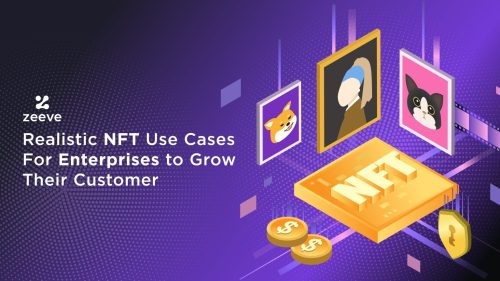
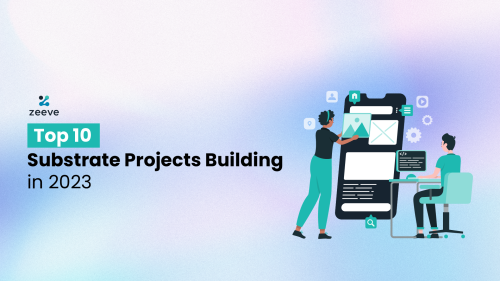
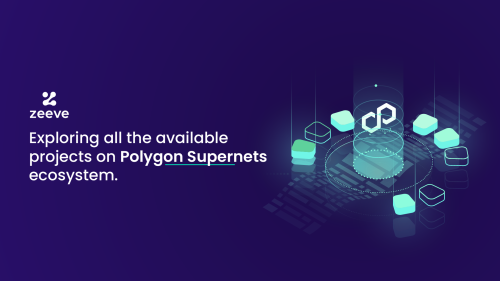
Responses